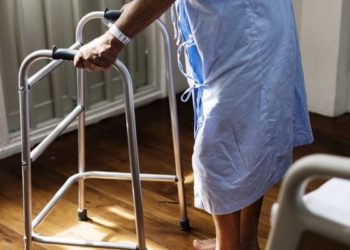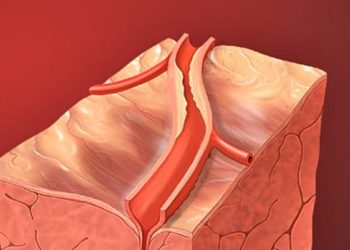Prenatal and postnatal homelessness linked with poorer health outcomes
1. Children <4 years of age with a history of prenatal or postnatal homelessness were more likely to have prior hospitalizations, fair or poor health status and developmental risk compared to children without any history of homelessness.
Evidence Rating Level: 2 (Good)
Study Rundown: Children comprise a significant proportion of the homeless population in the United States. A growing body of research has demonstrated the harmful effects of homelessness on health outcomes in children. The purpose of this study was to evaluate the association between the timing and duration of homelessness on health outcomes in children. Children with both prenatal and postnatal homelessness (“both” group) compared to those who never experienced prenatal or postnatal homelessness (“never” group) were significantly more likely to have prior hospitalizations, fair or poor child health status, and developmental risk. Children with a history of prenatal homelessness only compared with the never group, were more likely to have prior hospitalizations and fair or poor health status. Children with a history of postnatal homelessness only compared to the never group were more likely to have prior hospitalization, fair or poor health status and developmental risk. Secondary analysis evaluating duration of postnatal homeless during the infant and toddler similarly showed worse health outcomes when compared to infants and toddlers in the never group. Limitations of this study include retrospective design, use of self-reported data and grouping of multiple suboptimal living conditions under an umbrella category of homeless. Data from this study should impress upon Pediatricians the significant harmful associations of homelessness on child health and development. Pediatricians and policy makers should be actively intervening to identify and prevent homelessness.
Click to read the study published today in Pediatrics
Click to read the accompanying editorial in Pediatrics
In-Depth [retrospective cohort]: From May 1, 2009 through January 1, 2015, researchers with Children’s HealthWatch approached 28,067 caregivers with children <4 years of age during emergency room visits across urban centers in 5 states. Inclusion criteria included caregiver with a child ≤ years of age, residency in the state of the research site, language competency in English, Spanish or Somali. Exclusion criteria included private insurance and incomplete data. Of the 28,067 caregivers approached, 3018 (11%) were ineligible and 1912 (7.7%) refused or did not complete the interview. Homeless was defined as living in a shelter, motel, and temporary or transitional living accommodations. Homelessness was categorized as prenatal, postnatal, both or never. Primary outcomes included history of hospitalizations, developmental risk as per the Parents’ Evaluation of Development Status (PEDS) questionnaire, health status as per an NHANES-derived questionnaire, and over- and underweight status. Odds ratios were adjusted for survey year and site, mother’s birth place, race and/or ethnicity, education, employment status, marital status, and child’s age, birthweight and gestational age.
Out of interviewed respondents, 661 (3.2%) experienced prenatal homelessness, 758 (3.7%) experienced postnatal homelessness, 729 (3.5%) experienced both, and 18,423 (89.6%) were never homeless. Children in the Both Group compared to the never group were more likely to be hospitalized (aOR = 1.41; 95% CI = 1.18-1.69; P < 0.001), to have fair or poor health status (aOR = 1.97; 95% CI = 1.58-2.47; P < 0.001) and have developmental risk (aOR = 1.48; 95% CI = 1.16-1.89; P < 0.01). Children in the prenatal homeless group compared to the never group were more likely to be hospitalized (aOR = 1.20; 95% CI = 1.00-1.45; P = 0.05), have fair or poor health status (aOR = 1.35, 95% CI = 1.06-1.75; P = 0.02). Children in the postnatal homeless group compared to the never group were more likely to be hospitalized (aOR = 1.22; 95% CI = 1.03-1.45; P = 0.03), to have fair or poor health status (aOR = 1.37; 95% CI = 1.09-1.73; P = 0.01), and to have developmental risk (aOR = 1.34; 95% CI = 1.07-1.69; P = 0.01). There were no statistically significant differences for risk of underweight or overweight in any of the three homeless group categories compared to the never group. Secondary analysis evaluated the duration of postnatal homelessness (<6 or ≥6 months) by child age (<12 months or infants vs. ≥12 months or toddlers) compared to infants and toddlers in the never group. Infants and toddlers with postnatal homelessness <6 months and ≥6 months had various combinations of worse health outcomes than their counterparts in the never group.
Image: PD
©2018 2 Minute Medicine, Inc. All rights reserved. No works may be reproduced without expressed written consent from 2 Minute Medicine, Inc. Inquire about licensing here. No article should be construed as medical advice and is not intended as such by the authors or by 2 Minute Medicine, Inc.







